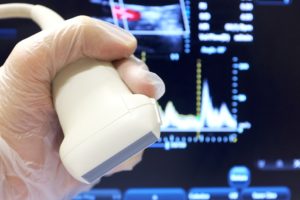When Should You Replace Your Ultrasound Equipment?
 Accuracy in ultrasound imagery is paramount. There is no room for error when you’re invested in giving patients a clear diagnosis of their status.
Accuracy in ultrasound imagery is paramount. There is no room for error when you’re invested in giving patients a clear diagnosis of their status.
This is why maintenance has to be regular and thorough. Subsequently, the lifespan of ultrasound machines is expanded, the better you stay on top of maintaining them.
Since the switch to digital tech, many have become too comfortable with the high-tech ultrasound machines that age well.
You should take proactive measures to prevent this habit from forming.
Importance of Maintenance
Wear and tear on ultrasound equipment, like probes, transducer, monitor, and the control panel will happen. No matter how experienced your radiologists and sonographers are, maintenance is needed.
Having a reliable maintenance service provider can really make operations run much smoother. You’ll save money in the long run, too. Keeping ultrasound tech up to OEM standards means peace of mind for you and your staff.
Here’s what, when, and why you should be administering a thorough maintenance check on all the components of your ultrasound machines.
Probe/Transducer
By far the most susceptible part of the ultrasound machine for wearing out. This magic wand comes into contact with lots of foreign agents. In addition, the friction over time reduces its accuracy.
The transducer has piezoelectric stones that transmit ultrasound waves when the machine is on. The waves move in a broad sweep inside the body and are reflected off dense structures like bones and organs.
The reflected waves are transmitted back by the transducer to the CPU and help in making pictures on the screen.
Constant imaging enables sonographers to distinguish development and state of babies and organs. Transducers should be maneuvered carefully and any deformity will prompt bad imaging.
Consistently examine the transducer for any imperfections like breaks on the handle or on different parts like the nose, link, or connector. Cuts, gouges and swelling of focal point material additionally call for quick consideration.
Generally, transducers can last up to seven years with proper maintenance, storage, and transport. This will vary based on manufacturer recommendations.
CPU
Also known as the central processing unit, it’s the brains of the ultrasound machine. This is what converts the ultrasound waves into visual information to transmit to the monitor.
This is accomplished by some pretty complicated math, firing millions of data every second. The result is a live, accurate visual representation of the body’s tissues of various densities.
On account of a pregnancy, ultrasound waves are not reflected by amniotic liquid and seem empty or dark in pictures. The bones and harder surfaces seem white and the gentler tissues seem dark in shading.
The sonographer will change the position of the transducer till he or she gets a reasonable picture of the infant.
The CPU radiates electric waves into the transducer and furthermore controls the recurrence of ultrasound waves. It helps store pictures so that the sonographer can keep up a database for patients.
This particular ultrasound tech should be dealt with legitimately to get the best outcomes. Normal checkups and support are critical. The product should be reset according to make and model directions and tested regularly.
Again, preferably, you should buy a maintenance service contract with a company that knows these machines well. They may seem costly, yet the service providers’ trained engineers know these systems the best.
Likewise, if you are ever experiencing any issues, their on-call support can save you time, money, and loss of a patient.
This is especially true for used ultrasound tech. You need to have the utmost attention and maintenance to get the most out of your investment.
Control Panel
This is another highly-prone ultrasound tech for wear and tear.
The control board is associated with the PC and aides the sonographer during the imaging process. The sonographer can control the recurrence of ultrasound waves being transmitted.
These elements relate to the clearness of pictures. The sonographer controls them with the assistance of the control board.
Standard support of the control board incorporates: checking the sharpness of pictures, checking for broken parts and keys on console, and upkeep of the trackball.
Any reduction of the functionality of the control panel will cause flawed imaging and trouble for the sonographer.
Monitor
The monitor of an ultrasound machine resembles the screen of the home PC or TV.
The sonographer sees examined pictures on the monitor and checks for deformities and oddities. He or she can zoom in or sharpen pictures to examine them better.
In ultrasound machines equipped for recognizing contribute varieties as Doppler. Other particular focuses, like the bloodstream and heartbeat, can be mapped.
Upkeep guarantees the monitor video functions properly and is adjusted to focus on specific objects. Power supply is checked and arrangements of peripherals to maintain OEM-prescribed measures.
HDD Storage and Printers
These work the same as any home PCs. Information from the ultrasound machine can be put away for storage, video recordings, to the cloud, or placed for access across the network.
With cloud solutions, doctors and sonographers can sign in and see information and pictures from anyplace on the planet.
This new system has given the opportunity for patients to get care in remote places and still maintain accuracy with data. When health innovation goes portable, it offers adaptability to specialists around the world.
Ultrasound pictures can, of course, be printed and most hospitals and facilities offer this option for a small fee.
As you may know from using them at home, printers need constant maintenance, both mechanically and replacing of ink cartridges.
Trusted Ultrasound Tech Services
All of this expensive ultrasound tech can only work as intended when its respective parts are properly maintained. That’s why service providers like Acertara Labs are such a valuable partner.
Place confidence in the technicians and in the patients by having regular ultrasound maintenance.
Contact us for more information and your specific needs or concerns. Allow our 60 years of experience to put your mind at ease.
